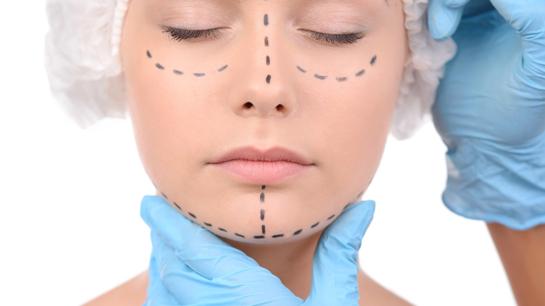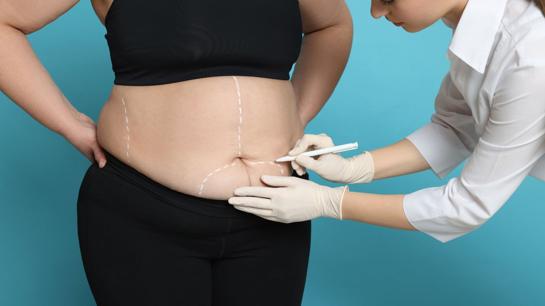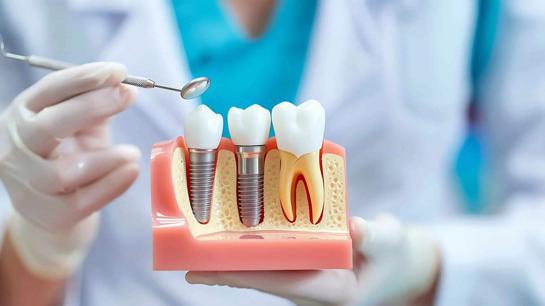Blepharoplasty Abroad
Curious about blepharoplasty abroad? This honest guide covers eyelid surgery options, costs, safety tips, real recovery, risks, and key advice for choosing trusted clinics—so you know what to expect from cosmetic eyelid surgery and medical tourism overseas.
Let’s be honest: nobody wakes up, squints at their mirror one morning, and instantly books eyelid surgery in another country. For most, it starts slower—a passing thought that returns again and again. Maybe after a friend’s offhand “You look tired.” Maybe in a photo when your eyes seem lost, half-swallowed by puffy lids or bags that don’t budge. Maybe after lotion and concealer run out of magic.
If you’re reading this, you’ve probably circled the idea for a while. Maybe you’ve saved a few before-and-after photos. Maybe you’ve read forums, maybe you’re just tired of spending money on creams that promise more than they deliver. You want something… decisive. Lighter eyes, a little more space for makeup, a face that feels closer to how you feel inside.
But then the realities creep in—cost, waiting lists, maybe mixed feelings about doctors at home. At some point, researching blepharoplasty abroad starts to sound not just feasible, but maybe smart.
Here’s what I wish people had spelled out for me at the start: what’s involved, what’s at stake, and which surprises are actually normal. Not the brochure version—the lived-in one.
What Is Blepharoplasty, Anyway?
Let’s demystify it. “Blepharoplasty” is a technical word, but the idea is simple. Your eyelids (upper, lower, or both) can accumulate extra skin as time passes. Sometimes fat, too. Gravity, genetics, maybe years of squinting or late nights—who knows? The skin folds start to hang or puff, making you look tired, older, sometimes even grumpy or sad when you feel nothing of the sort.
Blepharoplasty removes that extra skin, sometimes tweaks the muscle, sometimes repositions or gently removes fat. The aim isn’t to change your eyes, just freshen them. You—just less weighed down.
- Upper Blepharoplasty deals with those “hooded” or sagging lids.
- Lower Blepharoplasty targets puffy under-eye bags and the creases that laugh in the face of sleep.
- Both together: not uncommon, if the whole eye area feels heavy or shadowed.
For some, it’s mainly cosmetic—a chance to take years off, wear eye makeup again, reconnect with their own expression. For others, it’s functional: droopy lids can block vision or make eyes feel awkward and heavy by the afternoon.
Anyway, the end result—if done well—is subtle. Most people around you will think you “look well-rested” or “different, but I can’t say how.” That’s the goal: not dramatic change, just… relief.
Who Is Actually a Good Candidate?
You might be surprised how broad this group is. Sure, lots of folks hitting forty or fifty start checking out eyelid surgery. But age is only part of it. These days, people in their thirties with “inherited” tired eyes are researching, as are many in their sixties and seventies who just want to see (and feel) a bit lighter.
- Upper lids losing their crease or folding over your lashes
- Lower eyelids showing permanent bags, puffiness, or wrinkly circles that have become, well, permanent companions
- Vision graded by an optometrist as fine, but blocked by extra skin if you check in certain light
- Feeling that your neutral expression just seems, to others, a little… sad or weary
- Makeup not sitting right or migrating up by midday
To be a solid candidate, you’ll want:
- Relatively good health (truthfully, any elective surgery is safer without unmanaged chronic illnesses)
- No major eye disease (your surgeon should check for dry eye, for example)
- Non-smoking status, or a willingness to quit a few weeks before and after
- Realistic expectations: this is “refresh,” not “reinvent”
It sounds obvious, but it bears repeating: the happiest patients are the ones who do it for themselves. Not to appease anyone, not to chase every trend, just because they want their own face—only lighter.
Risks and Complications
Alright, here’s where it gets serious. Every surgery, especially operations abroad, comes with risks. Anyone who says otherwise isn’t being honest.
Common Risks
- Swelling: Very normal; sometimes impressively puffy for a week or two.
- Bruising: Expect raccoon eyes early on, yellowing as it fades.
- Temporary blurred vision: Not universal; usually a byproduct of swelling or ointments.
- Mild discomfort or a tight, itchy feeling.
Less Common, but Worth Knowing
- Bleeding or hematoma: A little post-op ooze happens, but sometimes blood collects under the skin and needs drainage.
- Scarring: Nearly all incisions fade, especially since they’re hidden in creases, but some people get thicker, pinker scars (especially if they’re prone to it).
- Asymmetry: Most faces are a bit asymmetrical to start, but a noticeable difference does happen (rare).
- Difficulty closing your eyes fully: Usually temporary, but if too much skin is removed, it can linger.
Rare but Serious
- Infection: Uncommon with proper care, but always a risk with any operation abroad where aftercare might be more complicated.
- Ectropion: The lower lid pulls away slightly – may need revision.
- Vision issues: Extremely rare, but possible if bleeding exerts pressure on the optic nerve.
Reputable clinics usually cite major complication rates below 2%. Bruising and swelling, though, are almost inevitable.
Minimizing risks? Honesty rules: tell your doctor everything (even supplements and over-the-counter remedies). Prioritize clinics with experienced, credentialed surgeons; don’t be wooed by promos alone. And follow post-op instructions, boring as they seem. Elevation helps swelling. Don’t go back to jogging or weight training too soon.
Preparing for Blepharoplasty Abroad
- Documentation: Send ALL your medical info in advance—surgeon will want photos and, sometimes, vision/eye health reports.
- No smoking/alcohol: Four weeks before (and after) is standard advice, even if you think you’re a “light” user.
- Medication pause: No aspirin, ibuprofen, vitamin E, ginseng, etc.—they can worsen bleeding.
- Clear schedule: Don’t plan intense sightseeing. Build in padding, in case you need extra days to feel comfortable showing your face in public.
- Support: Someone should travel with you if possible—moral, physical, and practical support (navigating airports with blurred vision is no fun).
- Sunglasses & cold packs: Not just fashion, but essentials post-op; swelling hates cold and dark.
On the emotional front, brace yourself for the first time you see your face post-op—most people look, in a word, strange for several days. Puffy, uneven, slightly alien. This is normal. Most forums are full of “What have I done?” posts at day two and three. Nobody regrets it at week six, but those first photos… let’s just say don’t schedule a family reunion right away.
How Is Surgery Actually Done?
- You’ll get local anesthesia (usually) with a little sedation to keep you calm, but not completely out. Some opt for IV sedation or general anesthesia if doing multiple procedures.
- Surgeon marks up the eyelids while you’re awake—the goal is to work with gravity, not against it.
- Small incisions follow natural lines: Upper lid incisions are in the crease, while lower are just below the lash line or inside the lid for certain types.
- Skin trimmed, fat adjusted: Sometimes a little, sometimes a bit more, sometimes just repositioned. Modern approaches are less aggressive—subtle is in.
- Finishing up: Incredibly fine stitches close things up. You’ll be gently bandaged, and off to recover, often within a couple hours.
Total time? One to two hours is common. Sometimes a bit longer if both lids, or paired with a brow lift. You rest in recovery, sip something, and soon someone’s delivering post-op instructions in a calm, practiced tone.
Recovery and Aftercare
The truth: those first few days feel slower and more awkward than most brochures suggest.
- First 48 hours: Eyes are swollen, maybe hard to fully close. Cold compresses are essential. Napping upright (pillow mountain) helps a lot. Vision may be blurry from ointments (and lingering anesthesia).
- Bruising peaks day 3 or 4: Then begins to fade.
- Eye drops or ointments: Nearly everyone needs them for a few days or week—dryness is not unusual.
- Stitches: Will be removed (or dissolve) in 5–7 days.
- Returning to public: Most people feel fine being seen, with sunglasses, by day 10–14. Concealer works after stitches are out.
Light walking is good right away, but forget exercise or lifting for a couple weeks. No bending over, definitely no rubbing eyes.
Taste in the mouth? Some people report a weird metallic flavor from ointments. Temporary, but odd.
Reading, screens, and work? Pace yourself. Day three or four, most can scroll a little, but expect eye fatigue first week.
Scar care? Gentle massage and sunscreen after the incisions close—ask your surgeon.
Follow-up? Reputable clinics abroad plan for remote or on-site follow-ups, sometimes with virtual check-ins. If something feels off, ask—not every twinge is urgent, but some are.
Expected Results and Effectiveness
- Eyes feel lighter, less weighed down.
- Upper lids stop creasing into your vision.
- Lower bags and heavy folds minimize or vanish.
- Smile is easier, because you don’t look “down,” even on good days.
- Vision (if previously blocked) sharpens, not because of glasses, but because the world just… opens up again.
Satisfaction is (truly) high when people choose this for themselves. Most report results feel natural, not “done,” and last 5–10 years for uppers, often much longer for lowers.
Aging continues, of course—no surgery pauses time. But for a long while, you look (and feel) more like yourself, and almost nobody asks, “Who’s your surgeon?”
Alternatives: What Else Exists
- Fillers: Can soften under-eye hollows for 8–18 months. Good for people with thin, dark circles—not so much for bags or excess skin.
- Laser resurfacing or microneedling: Help fine lines, but not loose skin.
- Ultrasound/radiofrequency “lifts”: Offer marginal tightening; work best for early, minimal sagging.
- Cosmetics and patches: Concealer, cooling gels, creams—offer temporary or minor improvement, but can’t “unbag” the eyes for real.
For significant sagging or chronic puffiness, only surgery offers a reset. But for early signs, non-surgical routes can buy time.
Why Blepharoplasty Abroad? What’s The Appeal?
- The obvious is cost; clinics abroad can be dramatically less expensive. But that’s rarely the only reason.
- Fast scheduling matters: no six-month waits. Some just want discretion—fewer questions from friends or coworkers.
- Others look for clinics that use cutting-edge tools or surgeons focused purely on eyes, sometimes more so than in smaller cities at home.
- There’s also the full-service angle—international clinics often plan for you to have private recovery, offer translation, rides, hotel partnerships, even post-op nurse visits.
For many, recovery feels a bit gentler away from the pressure to jump back to work or family in a blur. Sometimes the anonymity—just you, an unfamiliar city, and a new face to meet in the mirror—actually helps.
That said, travel is not for everyone. Consider logistics, your own comfort with being far from home, and set up post-op care where you’ll land.
Frequently Asked Questions (FAQ)
- Is it painful?
- Hardly ever truly painful—much more tight, itchy, maybe a little stingy for a day or two. Soreness fades quickly.
- How long will I stay in the hospital or clinic?
- Almost always outpatient. You’ll recover for a few hours, then go back to your hotel or apartment, instructions in hand.
- When is it safe to travel?
- Most are fit to fly in 7–10 days, but swelling and some bruising may linger. International clinics help with post-op flight tips.
- When can I go back to work?
- If you’re at a desk and don’t mind being seen with sunglasses or light swelling, a week is often enough. More “face-forward” jobs (retail, teaching) may want a bit longer.
- Are the results permanent?
- They’re long-lasting, especially for lower lids. Upper eyelids’ skin will keep aging, but many folks are happy for a decade or longer before considering a touch-up.
- Is surgery abroad as safe as at home?
- If the surgeon is credentialed, the clinic is accredited, and aftercare is sorted? Yes, in most cases. Risks rise when patients cut corners, skip follow-up, or pick clinics for price alone. Always look at reputation, not just cost.
The Real Bottom Line
This isn’t a sales pitch. Choosing blepharoplasty abroad is a blend of hope, anxiety, practicality, and genuine self-care. It’s rarely only about looks—often, it’s wanting your reflection to “match” you again, to reclaim sleep, energy, or spirit someone else sees in you, but your eyelids don’t always show.
Let your research take time. Listen to your nerves as much as your hopes. It’s not wrong to want to look more awake—to see yourself again, in every sense.
And, if and when you decide, you deserve the quiet confidence that comes with having chosen for you. Not for anyone else, not for a trend, just because a lighter gaze felt worth the journey.























